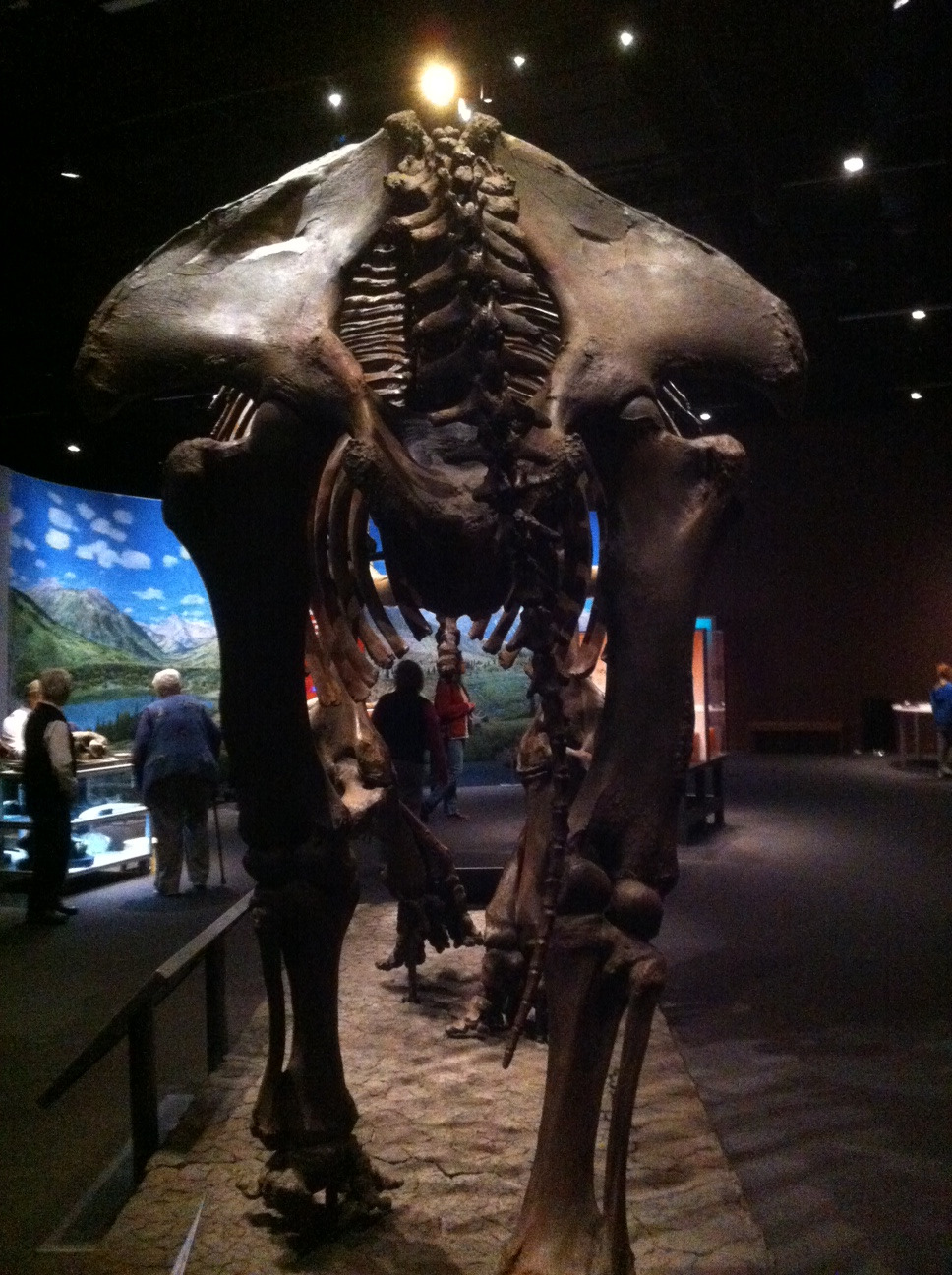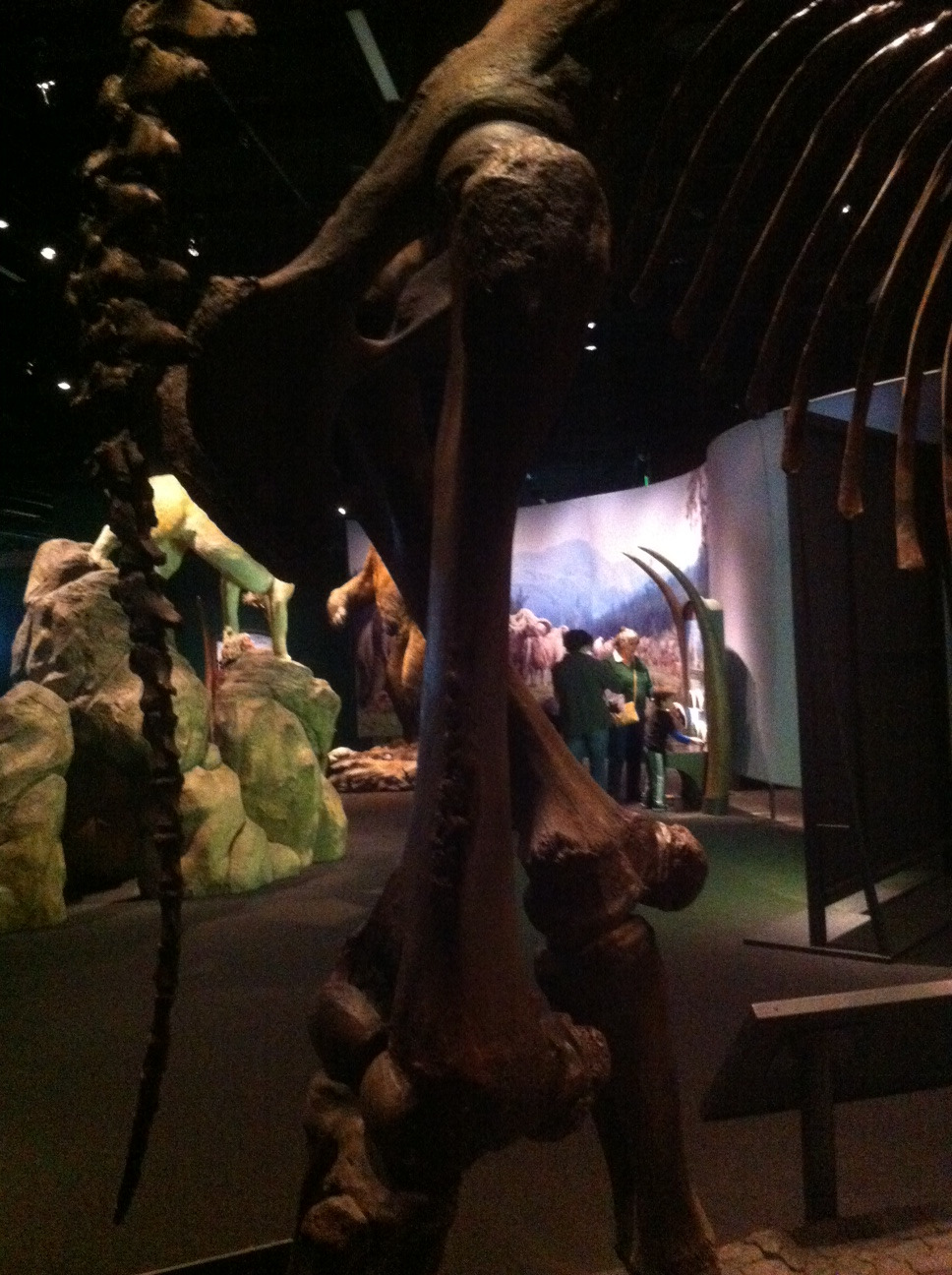What can we learn from a trip to the museum and ancient pachyderms?
Lessons from the Denver Museum of Science and the “Mammoths and Mastodons” exhibit.
Leave it to gait nerds to notice stuff like this. These are the things that keep us up at night.
Look carefully at the last 2 pictures, especially the femurs. Besides their grandious size, what do you see. Femoral anterversion! The angle of the femur head with the shaft of the femur is quite large. We remember from our discussion of anteversion previously (see here); that femoral anteversion allows a greater amount of internal rotation of the head of the femur in the acetabulum (ie the ball in the socket).
Now look at the top picture. Besides a cross over gait that Dr Allen was quick to point out. What do you see? Ok…tremendous glutes : ). What else? Look at the second picture for a hint. You got it! Internal rotation of the legs.
Think about how pachyderms are put together compared to say, reptiles, specifically lizards. The legs are UNDER the body in the former and STICK OUT from the body in the latter. Watch them walk. The latter swing their tails and the former have the legs under their center of mass.
Extrapolate this to human gait (We know, it’s a stretch, but you have a great imagination). Some people have their weight under their body (ie, they have sufficient internal rotation of the hips to allow this; many of these folks have more anteverision than retroversion. also remember that we are speaking versions, NOT torsions here). Think about retroverted folks. Wider stance, wider gait, just like reptiles.
Ok, maybe this was a stretch, but it was cool, no?
The Gait Guys. Comparing pachyderms to humans….reallly.
all material copyright 2013 The Gait Guys/The Homunculus Group. All rights reserved.



















